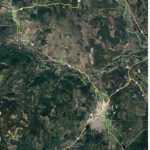Home »

B.C. mining remained strong in 2013
B.C.’s mining industry continues to grow and expand as new projects, construction starts and expansions drove job creation and investment throughout the mining industry in 2013.
According to a Jan. 3 Ministry of Energy and Mines press release the most important highlight of 2013 was the celebration of a new mine going into production in August. Mt. Milligan mine north of Prince George, a $1.5-billion project with 350 permanent jobs, shipped its first copper ore in late summer and celebrated its commissioning in October.
Additionally, a number of operating mines made improvements to operations. Both Line Creek in the Elk Valley (pictured above) and Gibraltar Mine in the Cariboo received Mines Act permit amendments that resulted in almost $400 million in investment and ensured jobs for 650 workers.

“The B.C. mining industry continues to be a major economic driver in this province. Many new jobs at operating mines were created this past year – these are high-quality jobs that support our families and help build strong communities for many years to come,” stated Bill Bennett, Minister of Energy and Mines and Minister Responsible for Core Review.
Mine construction dominated industry progress in 2013 with a number of large projects well on their way to becoming producing mines. Red Chris Mine in the northeast is well on its way. The $500-million project is expected to start producing ore in 2014. Roman mine, near Tumbler Ridge, also started construction and the company is working toward production in 2014, the ministry noted.
Both industry and the province continue to work closely with First Nations on resource development, setting out clear expectations for the consultation process and working toward more revenue-sharing agreements. Mining employs more First Nations than any other industry in B.C.
The province has signed 10 economic and community development agreements with First Nations to date. In 2013, the first cheques were delivered to First Nations for agreements with New Afton, Copper Mountain and Highland Valley mines.
Mining continues to be one of B.C.’s safest heavy industries and has a lower injury rate than most of the other resource and industrial sectors.
Since the BC Jobs Plan was released, two new mines are in operation, and five more are under construction or permitted. The province also has approved seven major expansions of existing mines.
“I look forward to the coming 2014. It is more important than ever to make sure that British Columbia’s mining industry remains well positioned, keeping our economy growing and strong is our government’s number one priority,” said Bennett, Kootenay East MLA.
In 2012, mining was valued at over $8.3 billion to B.C.’s economy and exploration was recorded at $680 million, a 47 per cent increase over the previous year and the highest ever.
Every British Columbian uses almost 23,000 kilograms (about 50,000 pounds) of mined products each year. When you brush your teeth, turn on a light, drive a car, ride your bike, put on the television, use a camera or telephone – you are supporting the mining industry.
In 2012, more than 30,000 people were employed in mining, mineral exploration and related sectors, compared to 2001 when only 14,700 people were employed in mining.
Today B.C. has 19 operating mines (nine coal and 10 metal). In 2001, there were 15 operating mines (seven coal and eight metal).
Mining takes up a small portion of B.C.’s land – less than one per cent.
Mining Association of BC: http://www.mining.bc.ca/
The Association for Mineral Exploration BC: http://www.amebc.ca/Home.aspx
Mineral Resources Education: http://www.bcminerals.ca/s/home.asp.
e-KNOW







